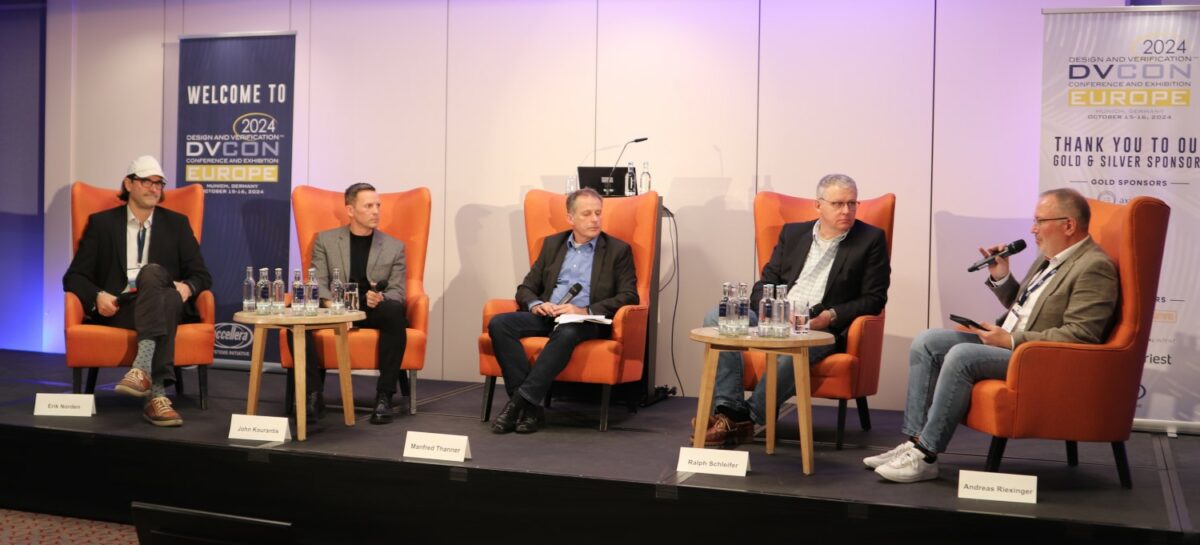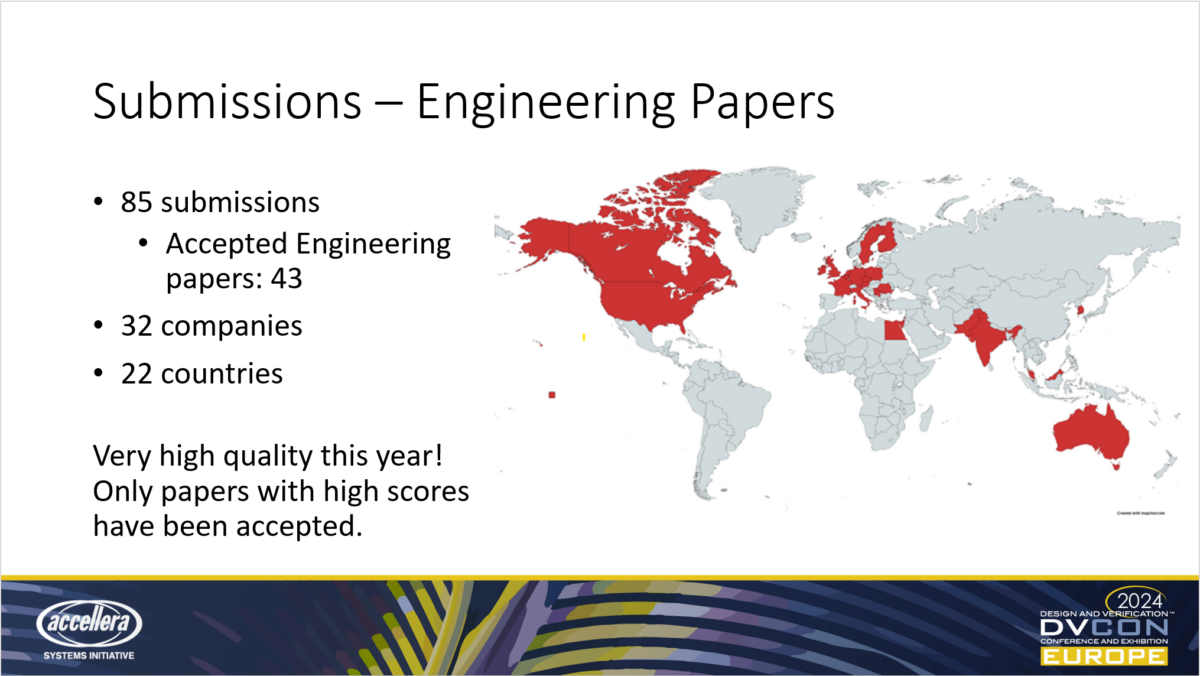The 2024 DVCon (Design and Verification) Europe conference took place on October 15 and 16, in its traditional location at the Holiday Inn Munich City Centre. Artificial intelligence and software were prominent topics, along with the traditional DVCon topics like virtual platforms, RTL verification, and validation.

Keynotes: Infineon and Zyphra
The keynotes provide high-level insights into broader technology industry trends and future directions, complementing the more detailed tutorials and paper presentations. A DVCon Europe keynote is not necessarily so much about how to build IP, chips, and systems, but about what they are being used for and the products they are part of. Not surprisingly, artificial intelligence (AI) has come up in most keynotes from the past few years…

This year started with Thomas Böhm from Infineon talking about “Dependable microcontroller architectures”. Microcontrollers are getting significantly more complex and are adding core clusters and accelerators to handle increases in compute requirements as well as low-latency handling of secured communication.

AI and machine learning (ML) techniques are being used in microcontrollers to implement fundamental control. This requires specialized hardware acceleration at a much smaller scale than what you find in datacenters and even client chips. Traffic on in-vehicle networks is encrypted, requiring security hardware acceleration to maintain low latency.

The second keynote came from Erik Norden from Zyphra, a startup that just went out of stealth in time for Erik to tell us the name of the company at DVCon! His talk was about “Next 10x in AI – System, Silicon, Algorithms, Data” – i.e., AI at datacenter scale. It was particularly interesting to hear Erik’s take on this as he started out on the hardware side and has moved towards the software/algorithm side.

Building an efficient and scalable AI system requires tweaking all aspects. For example, using a better training data set can improve the performance of a same-size model on same-size hardware. Zyphra has also developed new LLM architectures that get more performance out of existing hardware by using it more efficiently.
Software
The panel discussion, “Digital Transformation in Automotive – Expectations versus Reality”, spent a lot of time on software.

Software is becoming increasingly important to “traditional” automotive companies. It used to be specified as part of the functionality of physical components, but with the advent of software-defined vehicles (SDV) it is necessary to transition to a software-first model. Companies like Tesla have totally changed how software is treated and proven the model of delivering incremental value to the same hardware over time by software changes. I really liked the point being made that it has be to be made fun to work with software in automotive.
Software is also showing up in classic design and verification papers – both as part of the device-under-test and as part of the stimuli. More than half of all the papers at the conference addressed software in some way.
Open Source
Open-source software and open-source EDA software have grown in importance over time. There were papers and tutorials about open-source technologies like Qemu and cocotb, and open-source software like Linux is very commonly used in domains like automotive. Having access to hardware design flows based on open-source tools lowers the barrier to entry and brings more enthusiasts into the hardware design field.
Another open-source technology that is seeing major adoption is obviously RISC-V. Thomas Böhm’s keynote mentioned it as the potential future for automotive designs, and it was present in papers and tutorials.
Locally Global
DVCon Europe encompassed two keynotes, one panel, a day of tutorials, and 55 peer-reviewed papers split across an engineering and a research track. The conference takes place in the heart of Europe, but participants from all over the world! Some data was presented in the following slide:
For a deeper dive into what was discussed at the conference, check out https://jakob.engbloms.se/archives/4362 and the DVCon Europe group on linkedIn.
Also Read:
Accellera and PSS 3.0 at #61DAC
An Accellera Functional Safety Update
DVCon Europe is Coming Soon. Sign Up Now
Share this post via:







Comments
There are no comments yet.
You must register or log in to view/post comments.